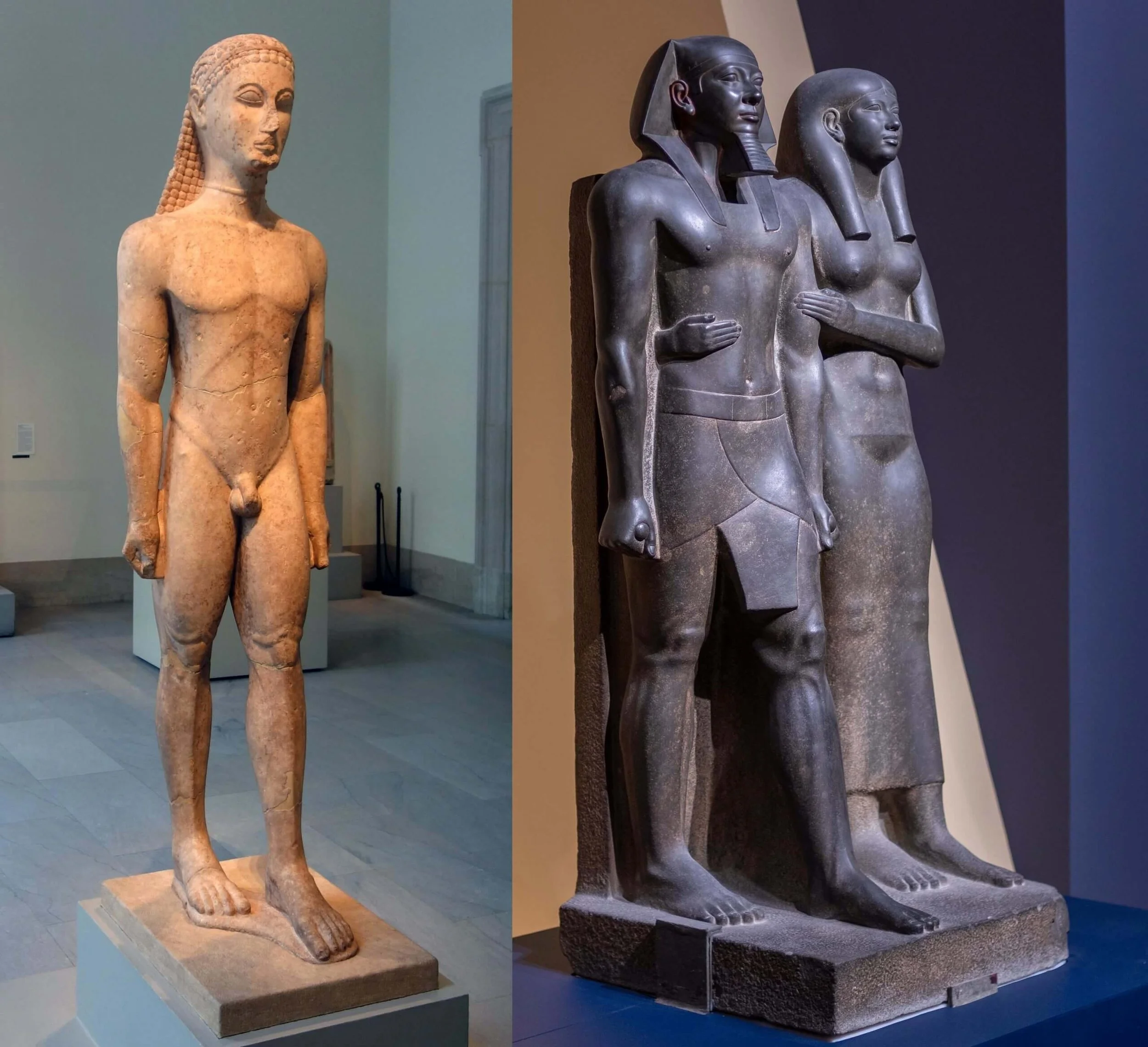Africans and the Making of Classical Greece
The Temples of Luxor, a UNESCO World Heritage Site.
When we think of ancient Greece—of marble statues, philosophers, and geometry—the image often begins and ends in Europe. But Greece didn’t rise in isolation. It stood at the crossroads of a busy ancient world, trading ideas, goods, and people across the Mediterranean. Among those connections, the civilizations of Egypt and Nubia—powerful, deeply rooted African cultures—played a key part in shaping what the Greeks became known for.
Egypt and Nubia: The First Teachers
By the time Greek scholars began visiting Egypt, the Nile Valley civilizations had already been flourishing for thousands of years. Egyptian temples were centers of science and learning, and Greek thinkers like Thales, Pythagoras, and Plato went there to study. The Egyptians had already worked out the mathematics needed to remeasure farmland after the Nile’s floods and had mapped the stars to create one of the world’s earliest calendars.
The Greeks carried what they learned home. Early Greek sculpture, like the kouros statues, clearly shows Egyptian influence in form and posture. Greek builders and artists adapted what they saw into something new—but Egypt’s fingerprint remained visible.
Left: Marble Statue of a Kouros, c. 590–580 B.C.E. (The Metropolitan Museum of Art); Right: King Menkaura (Mycerinus) and queen, 2490–2472 B.C.E. (Museum of Fine Arts, Boston).
South of Egypt, the Kingdom of Kush was a cultural and political power in its own right. In the eighth and seventh centuries BCE, Kushite rulers—often called the “Black Pharaohs”—controlled both Kush and Egypt. They built temples, pyramids, and monuments that carried African ideas of design and symbolism into the heart of the region the Greeks would later explore.
The Greeks absorbed from these older African civilizations, then developed their own ways of thinking and creating. The dialogue between cultures—African and Greek—was part of how Greece became a center of knowledge.
Africans in Greek Life and Story
Africa wasn’t just an idea to the Greeks. Africans lived among them, fought beside them, and appeared in their myths and literature.
Greek mythology included African heroes like Memnon, King of Aethiopia, who fought in the Trojan War, and Andromeda, daughter of an Aethiopian royal family. These stories placed African characters within the moral and imaginative world the Greeks built for themselves.
In the real world, Africans served in Greek armies and worked on ships that crossed the Mediterranean. Aesop, remembered for his timeless fables, was described in ancient accounts as a man with African features. Terence, known in Rome as Publius Terentius Afer (“the African”), was a playwright whose works shaped Western theater for centuries. Their voices, preserved through story and performance, continue to carry African presence through history.
Africans in Greek Art
Athenian calyx krater depicting a battle over a corpse.
Greek artists paid close attention to African subjects. From the sixth century BCE, Black figures appeared regularly in pottery, sculpture, and jewelry. They were shown as warriors, attendants, musicians, and royals—each rendered with a level of care that reflected direct familiarity, not distant fantasy.
In later periods, sculptors made bronze and marble portraits of African individuals with lifelike precision. The jewelry of the time often featured African faces cast in gold, a sign that their image was seen as beautiful and worthy of representation.
What Scholars See Today
Modern historians view the ancient Mediterranean as a shared world. Egypt, Nubia, Greece, and the Near East exchanged ideas and technologies constantly. The “Black Athena” debate of the 1980s drew renewed attention to these connections. While not all of its arguments hold, its central point—that Greece drew heavily from African and Eastern sources—has become widely accepted.
Recognizing this exchange moves us away from outdated stories that separated Africa from the birth of classical civilization. The truth is more connected, more human, and far richer.
A late Hellenistic bronze head of an African (ca. 1st Century B.C. - 1st Century A.D.).
A Shared Legacy
The rise of Greece as a center of art, science, and philosophy cannot be told without Africa. From the mathematical precision of the Nile Valley to the presence of African figures in Greek society and art, the thread of African influence runs through the story of classical civilization.
At the Northeast Louisiana Delta African-American Heritage Museum, we tell stories like these because they restore missing links in the chain of world history—reminding us that African heritage has always been central to the making of human culture.




